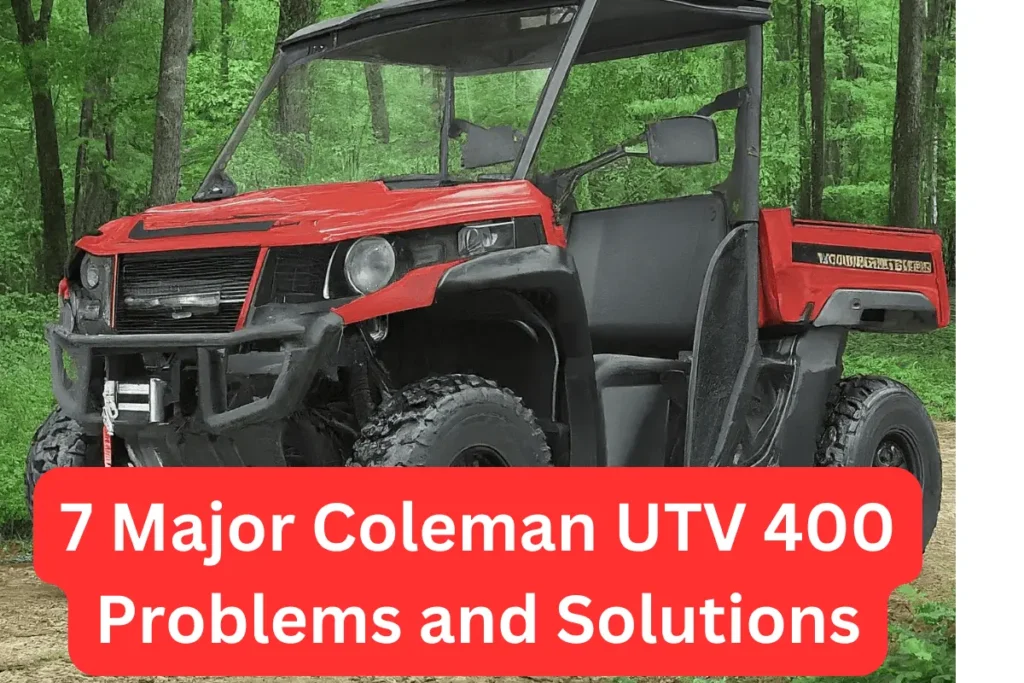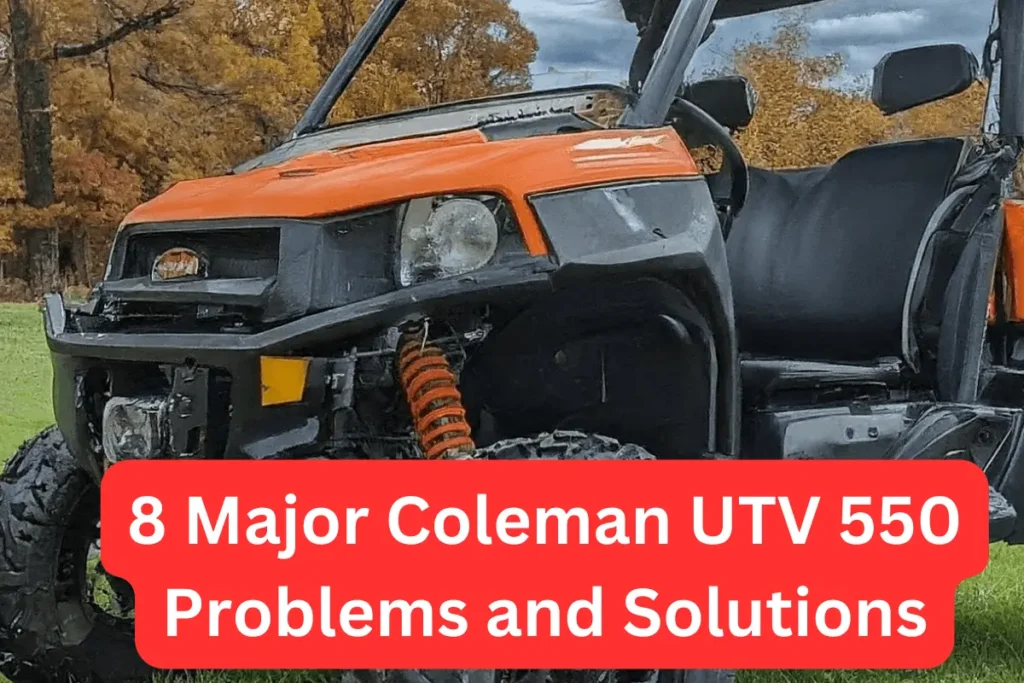Off-roading refers to driving or riding a vehicle on unpaved surfaces such as sand, gravel, riverbeds, mud, snow, rocks, and other natural terrains. It is a popular recreational activity that allows enthusiasts to explore areas that are inaccessible by regular cars.
Off-roading can range from casual trail driving to competitive racing in rugged landscapes. Vehicles typically used for off-roading include SUVs, trucks, dirt bikes, ATVs, and specialized off-road vehicles.
Origin of Offroading
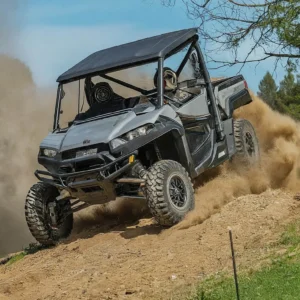
The origins of offroading can be traced back to the early 20th century when military vehicles were designed to traverse challenging landscapes during wartime.
Over time, this necessity evolved into a recreational activity, with the post-war era witnessing an increase in civilian interest in offroading. The advent of specialized offroad vehicles further propelled the growth of this sport, making it accessible to a broader audience.
Types of Off-Roading
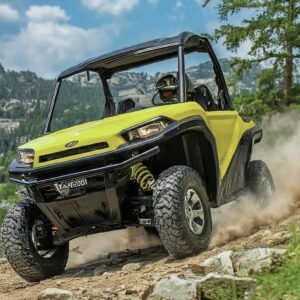
Here are the top 3 types of offroading.
1. Trail Driving
Trail driving is the most common form of off-roading, where drivers navigate unpaved paths or trails. These trails can vary in difficulty, from beginner-friendly routes to challenging paths that require advanced driving skills and heavily modified vehicles. The purpose is often to enjoy nature and the adventure of driving in less accessible areas.
2. Rock Crawling
Rock crawling involves driving over large rocks and boulders, requiring precise control and specialized equipment such as high ground clearance, locking differentials, and robust tires. This type of off-roading is highly technical and often competitive, with participants pushing the limits of their vehicles and their driving skills.
3. Mud Bogging
Mud bogging is all about driving through large, deep mud pits. Vehicles used for this activity typically have large, aggressive tires and powerful engines to navigate the challenging, slippery conditions. Mud bogging is both a recreational and competitive activity, with events often held to see who can traverse the muddiest terrain the fastest.
Vehicles for offroading
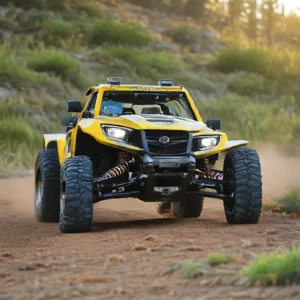
Off-road vehicles are designed to handle rough terrain and challenging environments, making them ideal for adventures and utilitarian purposes alike. Here’s a detailed look at the main types of off-road vehicles:
1. All-Terrain Vehicles (ATVs)
All-Terrain Vehicles (ATVs) are small, four-wheeled vehicles known for their versatility and ease of use. They are equipped with wide, low-pressure tires that provide excellent traction on various surfaces, from muddy trails to sandy dunes.
ATVs typically have handlebars for steering, similar to a motorcycle, and they can accommodate one or two riders. These vehicles are popular for recreational activities like trail riding and racing, but they are also used in agriculture, forestry, and search and rescue operations due to their ability to navigate difficult terrain.
ATVs are generally powered by engines ranging from 125cc to 1000cc, providing ample power for climbing steep hills and navigating rugged landscapes.
2. Utility Task Vehicles (UTVs)
Utility Task Vehicles (UTVs), also known as side-by-sides, are larger than ATVs and designed to carry more passengers and cargo. UTVs typically have a seating arrangement that accommodates two to six people, with a steering wheel and pedal controls similar to a car.
These vehicles are often used for work purposes, including farming, construction, and maintenance of large properties, thanks to their higher payload capacity and ability to tow heavy loads. UTVs come with features like roll cages, windshields, and even heating and air conditioning, making them more comfortable for long durations.
Engine sizes for UTVs range from 400cc to over 1000cc, ensuring they have the power needed for demanding tasks and challenging terrain.
3. Dirt Bikes
Dirt bikes are off-road motorcycles specifically designed for riding on rough and unpaved surfaces. They are characterized by their lightweight construction, high ground clearance, long suspension travel, and knobby tires, which provide excellent traction on dirt, mud, and gravel.
Dirt bikes are popular among motocross racers, trail riders, and adventure enthusiasts. They come in various engine sizes, typically from 50cc for beginners to 450cc for more experienced riders.
The design of dirt bikes emphasizes agility and control, allowing riders to navigate tight trails and perform jumps and other stunts. Advanced models often feature sophisticated suspension systems and high-performance engines to handle the rigors of off-road riding.
4. SUVs and Off-Road Trucks
Sport Utility Vehicles (SUVs) and off-road trucks are larger vehicles that combine the comfort of passenger cars with the capability of handling rough terrain. These vehicles typically feature four-wheel drive (4WD) or all-wheel drive (AWD) systems, higher ground clearance, and robust suspension systems to tackle off-road conditions.
Popular models include the Jeep Wrangler, Toyota Land Cruiser, and Ford Raptor. These vehicles are equipped with powerful engines, often ranging from V6 to V8 configurations, providing the torque needed for climbing steep inclines and traversing rocky paths.
Modern SUVs and trucks also come with advanced off-road technologies like hill descent control, locking differentials, and terrain response systems to enhance their off-road performance. Also explore the best offroad sedans.
5. Dune Buggies
Dune buggies are lightweight, open-air vehicles specifically designed for driving on sand dunes and beaches. They usually have a tubular frame and wide, low-pressure tires to prevent sinking into the sand.
Dune buggies are often built from modified Volkswagen Beetle chassis, but they can also be custom-built from scratch. These vehicles are known for their high power-to-weight ratio, making them agile and capable of rapid acceleration on soft sand.
Engine sizes vary widely, but many dune buggies use air-cooled engines ranging from 1.6 to 2.0 liters. Their design allows for significant suspension travel, enabling them to handle jumps and rough terrain typical of dune environments.
6. Rock Crawlers
Rock crawlers are highly specialized off-road vehicles designed for navigating rocky and uneven terrain. These vehicles are typically custom-built with features like reinforced frames, large tires with deep treads, and extremely flexible suspension systems to maximize traction and articulation.
Rock crawlers often use low gearing and powerful engines to provide the necessary torque for climbing steep, rocky inclines. They may also be equipped with winches and locking differentials to assist in overcoming particularly challenging obstacles.
Due to their specialized nature, rock crawlers are popular in competitive rock crawling events and among off-road enthusiasts who enjoy tackling the most demanding trails.
Essential Off-Roading Equipment
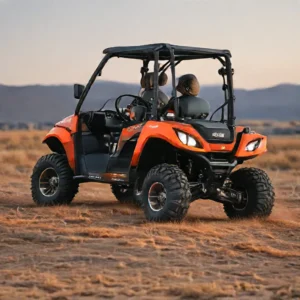
1. Tires
Off-road tires are crucial for providing the necessary traction on loose or uneven surfaces. They come in various types, including all-terrain and mud-terrain tires, each designed for specific off-roading conditions.
2. Suspension
A good suspension system allows a vehicle to absorb the impact of rough terrains, providing a smoother ride and protecting the vehicle’s components. Lift kits are often installed to increase ground clearance and accommodate larger tires.
3. Winch
A winch is a mechanical device used to pull vehicles out of difficult situations, such as being stuck in mud or sand. It is an essential tool for serious off-roaders, providing a safety net when tackling challenging terrains.
5 Benefits of Off-Roading
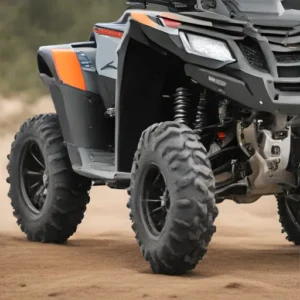
Off-roading, the thrilling adventure of driving on unsurfaced roads or tracks, offers a unique blend of excitement and numerous benefits. Here, I’ll delve into five key advantages of this popular outdoor activity, backed by facts and figures to ensure you get an accurate and informative perspective.
1. Physical and Mental Health Boost
Off-roading isn’t just about the adrenaline rush; it also provides significant physical and mental health benefits. The physical demands of navigating rough terrains engage multiple muscle groups, improving strength and endurance.
According to a study published in the Journal of Physical Activity and Health, outdoor activities like off-roading can reduce stress levels by 20% more than indoor activities. The mental challenge of choosing the right path and overcoming obstacles can also enhance cognitive function and mental resilience.
2. Enhanced Driving Skills
Off-roading can dramatically improve your driving skills. Navigating through unpredictable terrains requires precision, quick reflexes, and a deep understanding of your vehicle’s capabilities. This experience can translate to better driving on regular roads.
According to the International Journal of Vehicle Design, drivers who regularly engage in off-road activities have a 30% higher proficiency in vehicle handling and maneuvering compared to those who don’t.
3. Connection with Nature
One of the most profound benefits of off-roading is the opportunity to connect with nature. Away from the hustle and bustle of city life, off-roading takes you to some of the most remote and beautiful landscapes.
Research from the Environmental Protection Agency (EPA) shows that spending time in nature can improve mood and reduce the risk of mental health issues by up to 50%. The serene environment helps in relaxation and fosters a sense of peace and well-being.
4. Social Interaction and Community Building
Off-roading is often a group activity, fostering social interaction and community building. Joining off-roading clubs or participating in group events can enhance social bonds and create a sense of belonging.
The Outdoor Industry Association reports that 70% of people who participate in group outdoor activities feel a stronger connection to their community. These social interactions can lead to lasting friendships and a supportive network of like-minded individuals.
5. Economic Benefits
Engaging in off-roading can also have economic benefits. The off-road vehicle industry is a significant contributor to local economies. According to the Specialty Equipment Market Association (SEMA), the off-road market contributes over $10 billion annually to the U.S. economy.
This includes the sale of vehicles, parts, accessories, and related services. Additionally, off-roading events and tourism can boost local businesses and create job opportunities.
Essential Off-Roading Gear
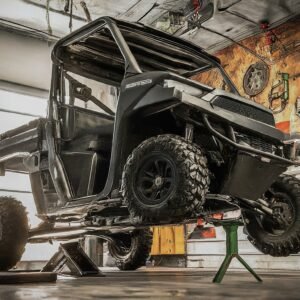
1. Vehicle Preparation
To go off-roading, you need a capable vehicle. Typically, a 4×4 is essential due to its enhanced traction and stability. Vehicles like Jeep Wrangler, Toyota Land Cruiser, and Ford Bronco are popular choices. Ensure your vehicle has high ground clearance (at least 8-10 inches) to navigate rough terrains and obstacles without damaging the undercarriage.
2. Tires
Invest in all-terrain or mud-terrain tires. These tires have deeper treads and stronger sidewalls to handle various surfaces like mud, sand, and rocks. For example, BFGoodrich All-Terrain T/A KO2 tires are highly rated for their durability and performance in off-road conditions.
3. Recovery Gear
Recovery gear is crucial if you get stuck. This includes:
- Winch: An electric winch (like Warn VR Evo) can pull your vehicle out of tough spots. Ensure it has a pulling capacity that exceeds your vehicle’s weight.
- Tow Straps: Heavy-duty tow straps with a minimum breaking strength of 20,000 pounds.
- D-Shackles: For securing the tow straps to recovery points.
- Traction Boards: Devices like Maxtrax help gain traction in sand, mud, or snow.
4. Suspension and Lift Kits
Upgrading your suspension and adding a lift kit (2-4 inches) enhances your vehicle’s ability to clear obstacles and provides a smoother ride over rough terrain. Brands like Old Man Emu and Rough Country are reputable in this domain.
Safety and Navigation
1. GPS and Maps
Off-roading often takes you into areas with no cell service. A reliable GPS device, such as Garmin Overlander, which is designed for off-road navigation, is essential. Additionally, carry physical maps as a backup.
2. Communication Devices
Radios (CB or GMRS) are vital for communicating with your group. Midland and Uniden are trusted brands. In case of emergencies, a satellite phone or personal locator beacon (PLB) like Garmin inReach can be lifesaving.
3. First Aid Kit
A comprehensive first aid kit is a must. It should include bandages, antiseptics, pain relievers, and emergency blankets. Adventure Medical Kits offer pre-packaged options suited for outdoor activities.
Personal Essentials
1. Clothing and Footwear
Wear durable, weather-appropriate clothing. Quick-dry, moisture-wicking fabrics are best. Sturdy, waterproof boots provide ankle support and protect your feet. Brands like Columbia and Merrell offer reliable outdoor gear.
2. Food and Water
Bring ample food and water. High-energy snacks like granola bars and trail mix are great choices. A rule of thumb is to carry at least one gallon of water per person per day. Using portable water filters, such as the LifeStraw, can help if you need to purify natural water sources.
3. Shelter and Sleeping Gear
If your trip extends overnight, pack a durable tent and sleeping bag rated for the expected temperatures. Brands like REI and The North Face provide quality camping gear.
Additional Tips
1. Vehicle Maintenance Tools
Carry a basic tool kit for repairs, including wrenches, pliers, and screwdrivers. Don’t forget a spare tire, jack, and tire repair kit.
2. Fuel
Always bring extra fuel in approved containers. The amount depends on the distance and terrain, but having an extra 5-10 gallons can be crucial in remote areas.
3. Knowledge and Skills
Learn basic off-roading skills, like reading the terrain, driving techniques for different conditions, and recovery methods. Consider taking a course from organizations like Overland Experts.
Tips for Beginner
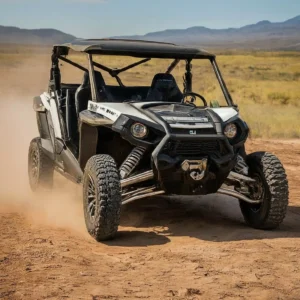
Off-roading is an exciting and challenging hobby that lets you explore nature in unique ways. As a beginner, it’s important to understand the basics and prepare adequately to ensure a safe and enjoyable experience. Here are some essential tips to help you get started with off-roading:
Understand Your Vehicle
Your vehicle is your best friend on the trail. Knowing its capabilities and limitations is crucial.
- Ground Clearance: This is the distance between the ground and the lowest point of your vehicle. More ground clearance means you can tackle rougher terrains without damaging your undercarriage.
- Four-Wheel Drive (4WD): Make sure your vehicle has a 4WD system. This provides better traction on slippery and uneven surfaces.
- Tires: Off-road tires have deeper treads for better grip. Consider getting all-terrain or mud-terrain tires depending on the type of off-roading you plan to do.
- Skid Plates: These protect your vehicle’s underside from rocks and debris.
Equip Yourself Properly
Having the right gear can make a huge difference in off-roading.
- Recovery Gear: Items like tow straps, a winch, and recovery boards can help you get unstuck if your vehicle gets bogged down.
- Navigation Tools: GPS devices, maps, and a compass are essential, especially in remote areas where cell service might be unavailable.
- First Aid Kit: Always have a well-stocked first aid kit in case of injuries.
Learn Off-Roading Techniques
Driving off-road is vastly different from driving on pavement.
- Throttle Control: Gentle and steady use of the throttle prevents wheel spin and maintains traction.
- Tire Pressure: Lowering tire pressure increases the tire’s footprint, providing better grip on soft surfaces like sand and mud. However, be careful not to go too low, as it can lead to a flat tire.
- Picking a Line: Choosing the right path or “line” through obstacles is crucial. Look for the smoothest and safest path to avoid getting stuck or damaging your vehicle.
Safety First
Safety should always come first for you and others.
- Travel with a Buddy: Off-roading alone can be dangerous. Always go with at least one other vehicle in case you need assistance.
- Communication: Use two-way radios to keep in touch with your group. This is crucial in areas with no cell service.
- Tell Someone: Before heading out, inform someone about your plans, including your route and expected return time.
Respect Nature
Off-roading takes you to beautiful places. Help keep them pristine.
- Stay on Designated Trails: This prevents environmental damage and protects wildlife habitats.
- Pack Out Trash: Leave no trace by taking all your trash with you.
- Respect Wildlife: Observe animals from a distance and never feed them.
Practice Makes Perfect
Off-roading skills improve with experience. Start with easier trails and gradually take on more challenging ones as you become more confident.
- Join a Club: Off-road clubs are great for meeting experienced drivers who can offer advice and tips.
- Training Courses: Consider taking an off-road driving course to learn the basics from professionals.
Conclusion
Off-roading is an exhilarating activity that combines the thrill of adventure with the challenge of navigating rugged landscapes. Whether you’re a casual enthusiast or a competitive off-roader, having the right equipment and understanding the different types of off-roading can enhance your experience and ensure safety. It’s a hobby that allows you to explore the great outdoors, test your driving skills, and enjoy the camaraderie of the off-roading community.
